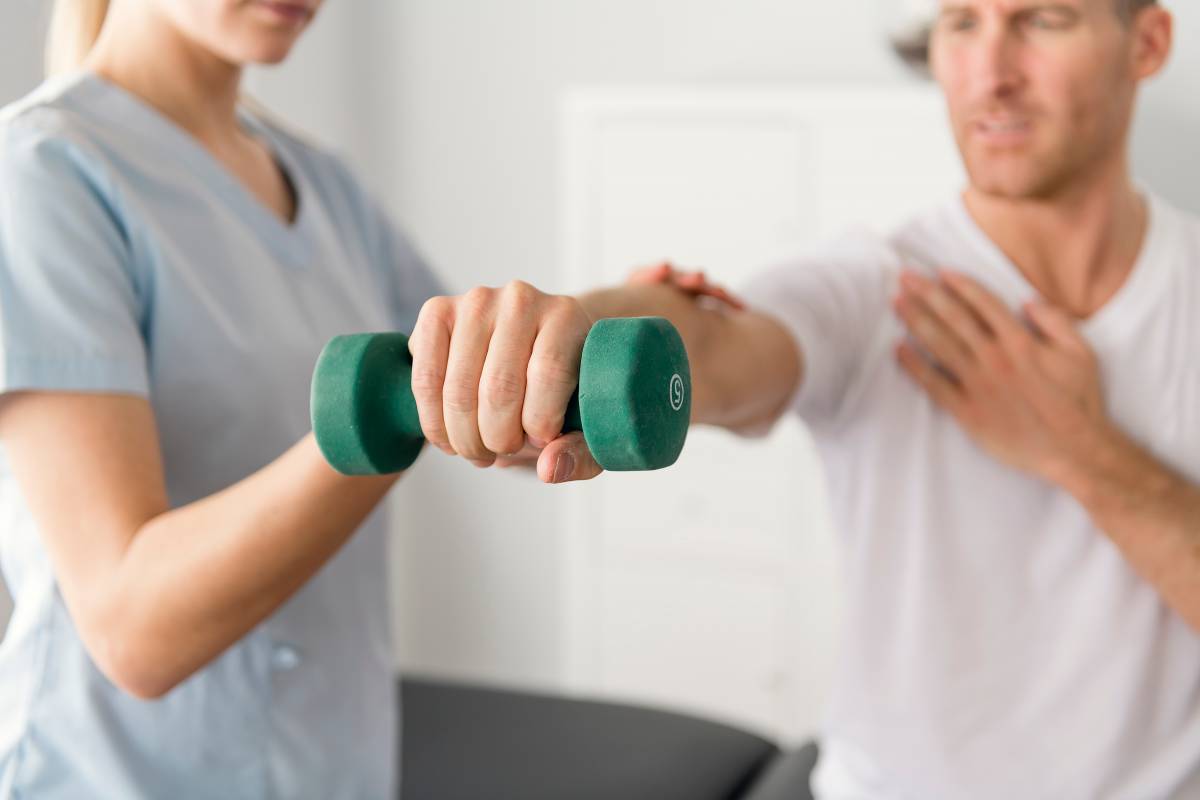Call for 'defined physio programmes' to treat shoulder issue after study questions current practice
A common method of treating calcific tendinopathy – caused by a build-up of calcium in the shoulder’s rotator cuff tendons – has been shown to be no more efficacious than placebo, concludes a trial published in The BMJ today (12 October)
The Norway and Sweden-based researchers say that ultrasound guided lavage (in which saline is injected into the calcium deposits to help dissolve them) along with a steroid injection or from a steroid injection alone are no better than from sham (placebo) treatment.
They question the use of ultrasound guided lavage for this condition and suggested their findings should lead to a ‘critical reconsideration’ of current treatment guidelines.
Despite its widespread use, ultrasound guided lavage has never been compared with sham treatment, so it’s unclear whether reported improvements are due to the treatment itself, natural recovery over time, or a placebo effect.
This prompted researchers, led by Stefan Moosmayer, a consultant orthopedic surgeon from Martina Hansens Hospital in Gjettum, Norway, to conduct the first sham controlled trial to test the true effect of ultrasound guided lavage with a steroid injection for patients with calcific tendinopathy of the shoulder.
Early signs of benefits of steroid injection not sustained
The study's findings are based on 218 adults (average age 50; around 65 per cent them women) who were referred to six hospitals in Norway and Sweden from April 2015 to March 2020 who reported having persistent symptoms of calcific tendinopathy for at least three months. At the start of the trial, patients provided information on a range of health and lifestyle factors, and X-rays were taken to assess the size of their calcium deposits.
Patients were then randomly split into three treatment groups: lavage plus steroid injection (73), sham lavage plus steroid injection (74), and sham only (71). After treatment, all patients were asked to do a home exercise programme.
The main measure of interest was pain intensity and functional disability on the Oxford Shoulder Score (a 0-48-point scale) reported by patients after two and six weeks and four, eight, 12, and 24 months.
At four months, there was no significant difference in pain and functional limitation among the three groups. Scores remained similar at the later assessments, even in patients whose calcium deposits had disappeared, which the researchers say questions the view that dissolving the calcium around the joint resolves symptoms.
Groups that included a steroid injection did report better pain relief than the sham group at two and six weeks after treatment, but notably the improvements at four months were no different than sham.
Future studies should investigate alternative treatment methods such as defined physiotherapy programmes and should include a no-treatment group to assess the influence of the natural course of calcific tendinopathy on the results [Stefan Moosmayer]
Caveats and conclusions
The researchers acknowledge the study had limitations, such as the absence of a no-treatment group to assess the natural course of the condition, but say the double blind, three-arm design, including a sham group, allowed them to assess the true clinical effect of active treatment.
As such, Dr Moosmayer and his colleagues conclude: ‘Our results challenge existing recommendations for the treatment of calcific tendinopathy and may necessitate a critical reconsideration of established treatment concepts for these patients.’
Future studies should investigate alternative treatments, such as defined physiotherapy programmes, and should include a no-treatment group to assess the influence of the natural course of calcific tendinopathy on the results, they add. 'Future studies should investigate alternative treatment methods such as defined physiotherapy programmes and should include a no-treatment group to assess the influence of the natural course of calcific tendinopathy on the results.'
Too soon to end treatment option, despute concerns
In a linked editorial, David M Robinson, a sports medicine physiatrist at Mass General Brigham and Spaulding Rehabilitation Hospital/Harvard Medical School in Boston, and three colleagues say lavage seems to be overused and may not be as effective as thought.
But Dr Robinson and his co-writers argue that it would be premature to consign ultrasound guided lavage or subacromial corticosteroid injection in treating calcific tendinopathy of the shoulder to the scrapheap.
These new findings ‘will inform discussions with patients and provide some reassurance to those with a similar, long symptomatic course that time will help and corticosteroids may facilitate short term pain relief’, they note.
Dr Robinson and his colleagues add that studies should include a sham control group from now on, assess treatment responses earlier in the symptomatic course and explore whether ultrasonographic classification systems can improve predictions over treatment responses.
To access the full version of the article – titled Ultrasound guided lavage with corticosteroid injection versus sham lavage with and without corticosteroid injection for calcific tendinopathy of shoulder: randomised double blinded multi-arm study doi: 10.1136/bmj-2023-076447 – click
To access the editorial, click
Author: Ian A McMillanShare it with















